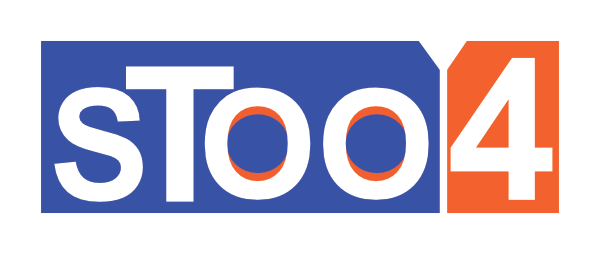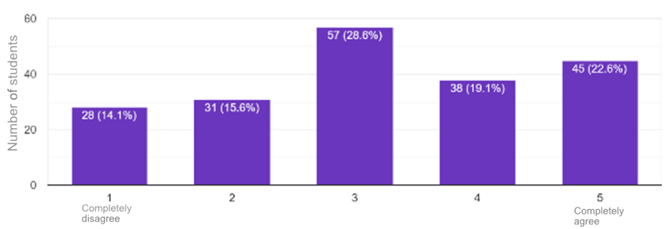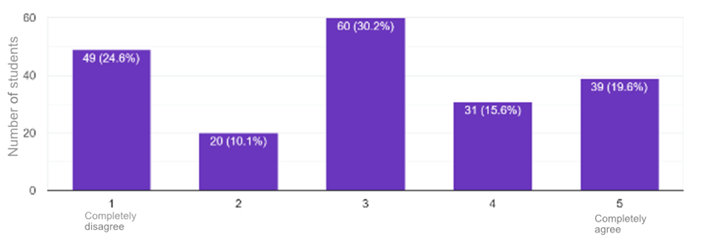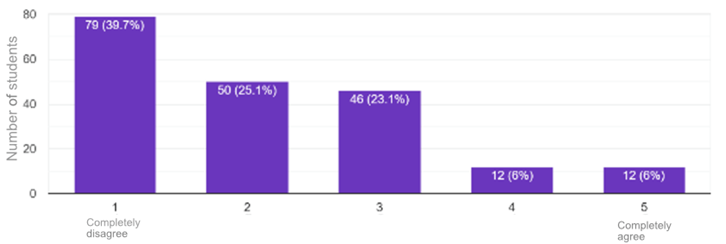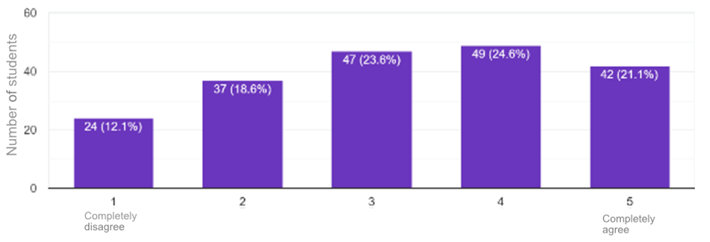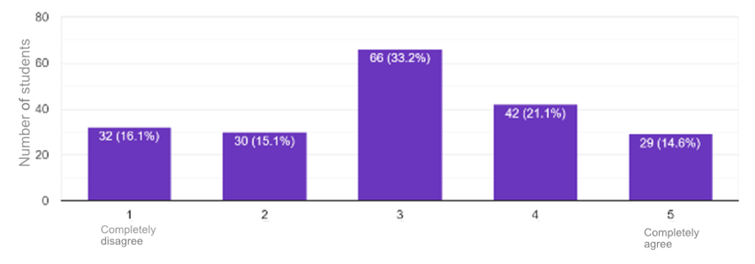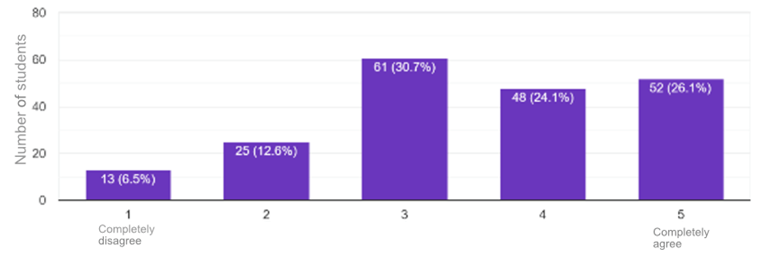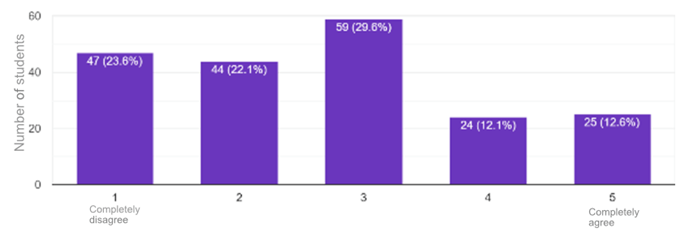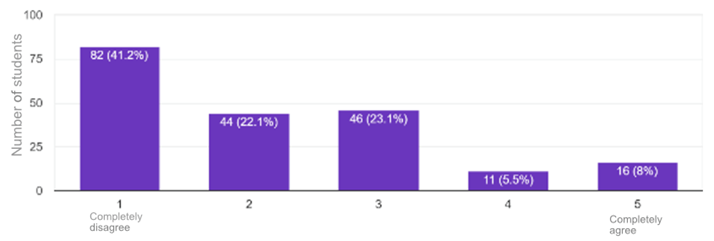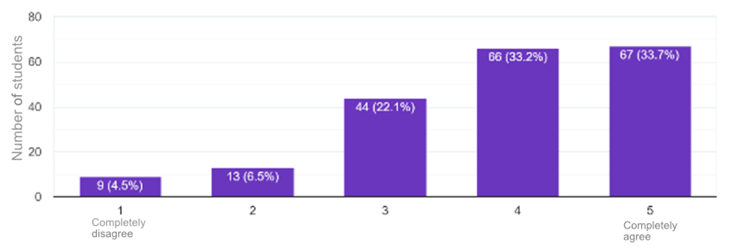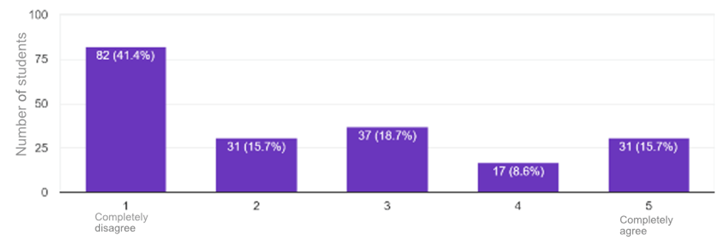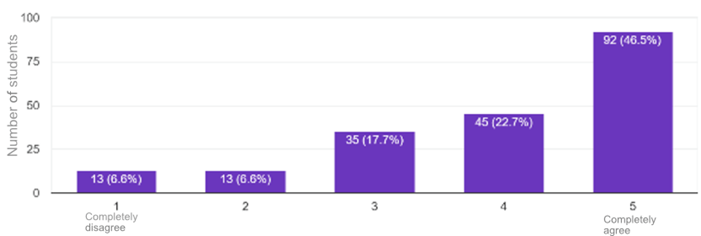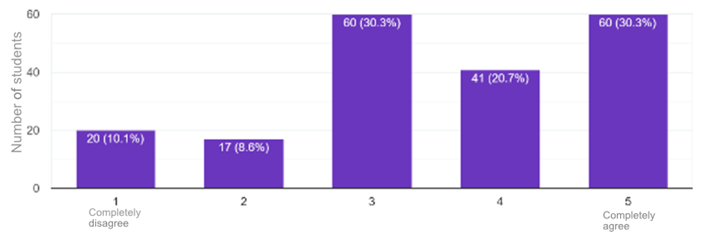ICT In Primary Education – Students’ Perspective
|
Teaching (Today for) Tomorrow: Bridging the Gap between the Classroom and Reality 3rd International Scientific and Art Conference |
|
Krešimir Pavlina, Ana Pongrac Pavlina, Anita ModrušanFaculty of Humanities and Social Sciences, University of Zagreb kpavlina@ffzg.unizg.hr |
|
| Section - Education for digital transformation | Paper number: 49 |
Category: Original scientific paper |
Abstract |
|
ICT (Information and Communication Technology) integration in primary education has revolutionized teaching. Through computers, tablets, and interactive whiteboards, educators create dynamic and immersive learning environments. Students engage with interactive educational software, digital textbooks, and online resources, enhancing comprehension and retention. ICT fosters collaborative learning opportunities, as students collaborate on projects and communicate with peers globally. It cultivates critical thinking, problem-solving, and digital literacy skills essential for success in the 21st century. However, challenges like the digital divide and concerns regarding screen time and digital distractions warrant careful consideration. Despite challenges, ICT empowers educators to deliver innovative and engaging lessons, preparing students to thrive in an increasingly digital society. Effective implementation requires ongoing professional development, robust infrastructure and pedagogical strategies that leverage technology effectively.
This study examines primary school students' attitudes toward the use of Information and Communication Technology (ICT) in their education. The survey was conducted in April and May 2023 on 199 students with goal explore their perspectives on ICT's impact on learning experiences. The study explored factors influencing these attitudes, including the effectiveness of digital tools, screen time management, and teacher integration of technology. Results reveal that students appreciate the benefits of ICT, especially digital quizzes, games, and adaptive platforms that enhance engagement. However, preferences vary, with some students favoring traditional methods over digital tools. Many students feel more motivated and confident when tasks involve digital technology, though prolonged screen time and excessive use are less favorable. Overall, students prefer a balanced approach to ICT integration, with moderate and occasional use being most effective. To maximize ICT’s potential, it is crucial to tailor its use to individual needs, ensuring it complements traditional methods. |
|
Key words: |
|
ICT; primary education; students |
Introduction
The integration of Information and Communication Technology (ICT) into primary education has revolutionized the teaching and learning process, aligning education with the demands of an increasingly digital society. ICT tools, such as interactive whiteboards, digital textbooks, gamified applications, and adaptive learning platforms, offer opportunities to make learning more engaging, interactive, and personalized. These technologies not only support cognitive development but also foster essential 21st-century skills, such as critical thinking, creativity, and digital literacy (Dingli et al. (2018)). However, the successful implementation of ICT in primary education requires addressing significant challenges, including teacher readiness, student attitudes, the digital divide, and the development of infrastructure and supportive policies.
ICT tools in primary education are transforming traditional pedagogies by providing diverse and interactive methods for delivering content. Digital platforms and applications offer a range of multimedia resources, enabling students to visualize and interact with complex concepts. For example, Saif et al. (2021) presents how augmented reality (AR) enhances student engagement and comprehension. AR allows students to manipulate virtual models or explore learning content, turning abstract topics into tangible learning experiences.
Adaptive educational platforms use artificial intelligence (AI) to tailor content to individual student needs, addressing specific strengths and weaknesses. This customization has been shown to improve learning outcomes and foster inclusivity by supporting students with varying abilities and learning styles (Lara Nieto-Márquez et al. (2020)). In addition, gamified platforms enhance motivation and sustained interest, as students receive real-time feedback and experience a sense of accomplishment.
ICT also facilitates collaborative learning. Digital tools enable students to work together on projects and connect with peers across the globe. These interactions encourage teamwork, cross-cultural understanding, and problem-solving. For instance, Kangas et al. (2022) highlighted how the integration of ICT in STEAM (Science, Technology, Engineering, Arts, and Mathematics) projects promote creativity and interdisciplinary thinking, preparing students for the complex challenges of the future.
The success of ICT in primary education depends significantly on students' attitudes toward technology. Positive perceptions can enhance engagement, motivation, and academic achievement. Rodriguez-Jimenez et al. (2023) argue that students often view ICT as a valuable addition to their learning experiences, particularly when tools are intuitive and aligned with their interests. Interactive applications and gamification have been particularly effective in maintaining students’ curiosity and enthusiasm.
However, not all students embrace ICT seamlessly. Technical challenges, lack of relevance in digital content, and insufficient teacher support can lead to frustration and disengagement (Althubyani (2024)). Ensuring that digital tools are accessible, reliable, and well-integrated into the curriculum is essential for fostering a positive learning environment.
Teachers are pivotal to the effective implementation of ICT in primary education. Their preparedness, attitudes, and teaching strategies directly impact how technology is utilized in classrooms. Despite the growing availability of digital tools, many educators feel inadequately trained to integrate ICT into their teaching practices effectively. Althubyani (2024) emphasized the importance of professional development programs in equipping teachers with the technical skills and pedagogical frameworks needed to harness ICT effectively.
Furthermore, teacher attitudes toward ICT play a crucial role in its adoption. Educators who view technology as an enabler of innovative teaching are more likely to use it creatively and confidently. Building a culture of collaboration, where teachers share best practices and successes, can enhance their confidence and willingness to experiment with new digital tools.
While ICT has the potential to democratize education, socio-economic disparities often hinder its equitable implementation. The digital divide remains a significant barrier, with students from underprivileged backgrounds facing limited access to devices and reliable internet connectivity. Kangas et al. (2022) stressed that this inequality restricts opportunities for many students, exacerbating existing educational disparities.
Addressing the digital divide requires multi-faceted approaches, including government initiatives to provide devices and internet access to underserved communities, investment in school infrastructure, and partnerships with technology developers. Schools can also play a crucial role by implementing inclusive ICT programs and ensuring that all students, regardless of their socio-economic background, have opportunities to develop digital skills.
The successful integration of ICT in primary education calls for a coordinated approach involving educators, policymakers, and technology developers. Policies should prioritize investments in teacher training, infrastructure, and research to support sustainable ICT adoption. Furthermore, ICT initiatives must align with broader educational goals, such as fostering critical thinking, creativity, and collaboration.
Research into emerging technologies like virtual reality (VR), AI, and AR will continue to shape the future of ICT in education. Saif et al. (2021) suggested that these technologies could create even more immersive and engaging learning experiences, further enriching the educational landscape. However, to maximize the potential of ICT, it is essential to address challenges related to access, equity, and teacher readiness.
This paper examines students’ attitudes toward ICT in primary education, drawing on recent studies to explore the factors influencing these attitudes and their implications for teaching and learning. By synthesizing evidence from contemporary research, it aims to provide insights into how educators can optimize ICT integration to maximize its benefits while addressing its challenges. Ultimately, understanding and shaping students' attitudes toward ICT will be crucial in preparing them for a rapidly evolving digital world.
Methodology
This study explores the attitudes of primary school students toward the use of ICT in their education. Study was conducted between April and May 2023, the research surveyed 199 students, aiming to gain insights into their perspectives on how ICT impacts their learning experience. By examining students’ experiences, preferences, and the challenges they face, this paper aims to provide a deeper understanding of the role ICT plays in shaping their educational journey and to offer recommendations for optimizing its use in primary education.
Results
Students had to express their agreement with 17 statements about their attitudes about ICT in education on a scale from 1 (completely disagree) to 5 (completely agree).
Figure 1.
I think I manage my screen time well
The results presented in Figure 1 reflect a mixed but relatively balanced view on screen time management. While almost half of the students (47.7%) rated the statement positively (Agree or Strongly Agree), a significant number (31.2%) remained neutral, and about 21.1% expressed disagreement or strongly disagreed. This suggests that, while many students feel they manage their screen time well, there is still a notable portion who may either struggle with it or are uncertain about how well they manage it.
Figure 2.
I feel great after spending more than an hour in front of the screen
The results in Figure 2 show a relatively mixed response to the statement, but with a notable tendency toward positive feelings about extended screen time. While 41.7% of students (combined total of Agree and Strongly Agree) reported feeling good after spending more than an hour in front of a screen, a considerable portion of students (29.7%) disagreed or strongly disagreed, suggesting that many students may not feel great after prolonged screen time. The remaining 28.6% of students felt neutral, suggesting that the effects of screen time might be less impactful or not strongly felt by this group. This variation highlights differing experiences and perceptions about the impact of prolonged screen time.
Figure 3
I understand the material better when the teacher explains it to me with the help of a computer and projector than with the help of a blackboard and chalk
Figure 3 display results that suggest a divided view on the effectiveness of using a computer and projector for teaching compared to the traditional blackboard and chalk. While 35.2% of students (combined total of Agree and Strongly Agree) feel that digital tools improve their understanding, a same portion of students (34.7%) disagreed (Strongly Disagree and Disagree). The largest group, 30.2%, were neutral, indicating that for many students, the method of instruction might not make a significant difference in their comprehension of the material. These findings reflect a mix of preferences, with some students favoring traditional methods, others preferring digital tools, and many remaining undecided.
Figure 4
I better understand the material we practice with the help of digital quizzes and games than when we solve tasks in a workbook or on worksheets
The results in Figure 4 indicate a somewhat mixed response to the use of digital quizzes and games versus traditional workbook or worksheet tasks for understanding the material. While 38.2% of students (combined total of Agree and Strongly Agree) feel that digital tools improve their understanding, a significant portion (31.7%) disagreed or strongly disagreed with this statement. The largest group, 30.2%, remained neutral, suggesting that for many students, there is little difference between the two methods or that they are equally effective. These findings suggest that while digital tools are favored by some, others may still prefer more traditional methods for learning.
Figure 5
My teachers use digital technology often enough in the teaching process
The results suggest a generally positive view regarding the use of digital technology in teaching, with 60.3% of students (combined total of Agree and Strongly Agree) believing that digital technology is used often enough in the classroom. However, there is still a portion of students (11.0%) who feel that their teachers use it too infrequently, with 28.6% of students remaining neutral. Overall, the data indicates that while most students feel that digital technology is integrated into the teaching process at an appropriate frequency, there is still room for improvement, particularly for those who feel it is underused.
Figure 6
My teachers overuse digital technology
The results in Figure 6 indicate that the majority of students, 64.8% (combined total of Strongly Disagree and Disagree), do not feel that their teachers overuse digital technology, suggesting that most students find the use of digital tools to be balanced or appropriate. On the other hand, a smaller group of students, 12.0% (combined total of Agree and Strongly Agree), feels that digital technology is overused in the teaching process. The remaining 23.1% were neutral, indicating that they did not have strong opinions on whether digital technology is overused or not. Overall, the findings suggest that, for most students, the use of digital technology in teaching does not seem excessive.
Figure 7
My teachers use digital technology that is appropriate and interesting
Results in Figure 7 indicate a generally positive perception of the digital technology used by teachers. A significant 65.3% of students (combined total of Agree and Strongly Agree) feel that the technology used is both appropriate and interesting, reflecting a high level of engagement with the tools used in the classroom. However, a smaller portion of students, 12.5% (combined total of Strongly Disagree and Disagree), feel that the technology is either not suitable or not engaging. The 22.1% who rated it neutral may be indifferent or feel that the technology is neither particularly exciting nor ineffective. Overall, the data suggests that the majority of students find the digital tools used in their classrooms to be effective and engaging.
Figure 8
I can study for an hour without using my mobile phone/tablet/computer in order to rest
Figure 8 presents results that suggest that most students are able to study for an hour without relying on their mobile phones, tablets, or computers to rest. 59.8% of students (combined total of Agree and Strongly Agree) feel confident in their ability to study without digital distractions. However, there is still a portion of students, 22.7% (combined total of Strongly Disagree and Disagree), who find it challenging to study for an hour without the use of these devices, possibly indicating a reliance on digital tools for breaks or focus. The 17.6% neutral responses suggest that for some students, this may vary depending on the situation. Overall, most students report a strong ability to focus and study without digital interruptions.
Figure 9
Digital devices often distract me while studying
The results reveal that a sizable number of students feel that digital devices are a source of distraction while studying. Almost 45.7% of students (combined total of Agree and Strongly Agree) believe that digital devices often interfere with their focus during study sessions. However, a larger portion of students, 30.7% (combined total of Strongly Disagree and Disagree), do not feel that digital devices are a frequent source of distraction. The 23.6% neutral responses suggest that for some students, the impact of digital devices on their focus may vary, depending on the situation. Overall, the data highlights that while many students feel distracted by digital devices, there is also a significant portion who feel that they can study without digital interruptions.
Figure 10
I think we learn more with the use of digital technology
The results presented in Figure 10 show a mixed but generally positive view of digital technology's role in learning. While 35.7% of students (combined total of Agree and Strongly Agree) feel that digital technology helps them learn more, a significant 31.2% (combined total of Strongly Disagree and Disagree) do not believe it contributes significantly to their learning. The 33.2% neutral responses suggest that for many students, the impact of digital technology on their learning is either unclear or not strongly felt. Overall, while many students see the value in digital tools for learning, there is also a notable portion who do not feel that these tools make a substantial difference.
Figure 11
I find the teaching in which digital technology is used more interesting
The results in Figure 11 suggest a generally positive perception of digital technology in making lessons more interesting. A combined 50.2% of students (Agree and Strongly Agree) feel that lessons incorporating digital technology are more engaging. However, 19.1% of students (Strongly Disagree and Disagree) do not feel that digital tools make the teaching more interesting, indicating that for some, traditional teaching methods might be preferred. The 30.7% neutral responses suggest that a significant portion of students is either indifferent or does not find a noticeable difference between lessons with or without digital technology. Overall, the data highlights a strong tendency toward finding digital technology-enhanced teaching more engaging, although not all students share this view.
Figure 12
Digital technology should be used every school hour
The results show a mixed opinion on the idea of using digital technology in every school hour. A significant 45.7% of students (combined total of Strongly Disagree and Disagree) believe that digital technology should not be used on every school hour of certain subject. However, 29.6% of students remain neutral, suggesting that some students might see value in digital technology but do not feel it needs to be always used. Only a smaller portion, 24.7% (combined total of Agree and Strongly Agree), feels that digital technology should be integrated into every school hour. Overall, the data suggests that while many students see the value of digital technology, they do not believe it should be overused or incorporated into every lesson.
Figure 13
Digital technology should be used during complete lesson
Results presented in Figure 13 suggest that most students do not feel digital technology should be used during complete lesson. Majority of 63.3% students (combined total of Strongly Disagree and Disagree) believe that digital technology should not be continuously used throughout lesson. A smaller portion, 13.5% (combined total of Agree and Strongly Agree), supports the idea of using digital technology during complete lesson, but this group is relatively small. The 23.1% neutral responses suggest that some students may feel that digital technology could be used at certain times but not necessarily all the time. Overall, the data indicates a clear preference for using digital technology in moderation, rather than consistently throughout complete lesson.
Figure 14
Digital technology should be used occasionally
Figure 14 display results that indicate a strong preference for the occasional use of digital technology. A total of 66.9% of students (combined total of Agree and Strongly Agree) feel that digital technology should be used in moderation, specifically on an occasional basis. On the other hand, only 11.0% of students (combined total of Strongly Disagree and Disagree) disagree with statement that digital technology should be used occasionally. The 22.1% neutral responses suggest that some students may not have strong feelings on the matter, but the overall trend shows that most students prefer a balanced approach, with digital technology used occasionally rather than constantly.
Figure 15
I am happy when at school we get the task of recording an educational video ourselves
The results presented in Figure 15 show that a large portion of students, 57.1% (combined total of Strongly Disagree and Disagree), does not enjoy the task of recording an educational video, with many finding it less appealing. However, a smaller group, 24.3% (combined total of Agree and Strongly Agree), enjoys that type of task. Only 18.7% of students were neutral, indicating that for some students, the activity does not evoke strong feelings either way. Overall, while a minority of students find recording educational videos enjoyable, the majority do not feel particularly happy about this task.
Figure 16
I easily create my own digital content (video, presentation, digital poster, etc.)
Figure 16 presents results that indicate that most students feel confident in their ability to create digital content. A combined 69.2% of students (Agree and Strongly Agree) report being able to easily create content like videos, presentations, and digital posters. However, 13.2% (combined total of Strongly Disagree and Disagree) find it difficult to create digital content, indicating some challenges in this area. The 17.7% neutral responses suggest that for some students, the ability to create digital content may vary depending on the task or situation. Overall, the data shows that the majority of students are confident in their ability for digital content creation, but a small group faces difficulties.
Figure 17
I try harder when we get a task in which we need to use digital technology (record a video, make a presentation, digital poster, etc.)
The results in Figure 17 suggest that a significant number of students feel more motivated to try harder when tasks involve digital technology. A combined 51.0% of students (Agree and Strongly Agree) report that they put in more effort when digital technology is part of the task. However, 18.7% (combined total of Strongly Disagree and Disagree) do not feel more motivated by the use of digital tools. A sizable 30.3% of students were neutral, suggesting that for some students, the type of task or other factors may play a more important role than the use of digital technology. Overall, while many students find digital technology motivating, it does not seem to be a universal motivator for all students.
Conclusions
This study highlights the diverse perspectives of primary school students regarding the integration of ICT in their education. The findings reveal that while students generally appreciate the use of digital technology in the classroom, their preferences, experiences, and challenges vary significantly. Many students recognize the benefits of ICT in making learning more engaging, interactive, and effective, particularly through tools like digital quizzes, games, and adaptive platforms. However, a considerable number of students expressed neutral or mixed feelings about the extent of ICT usage, with some preferring traditional methods for certain aspects of learning.
Students largely favor a balanced approach to ICT integration, with occasional use being seen as most effective. While many students feel confident in creating digital content and report increased motivation for tasks involving digital tools, others find prolonged screen time or excessive use of technology to be less desirable. These findings underscore the importance of tailoring ICT use to individual and group needs, ensuring it complement rather than overwhelms traditional teaching methods.
To maximize the benefits of ICT in primary education, it is crucial to address key challenges, including minimizing digital distractions, bridging the digital divide, and ensuring that educators are adequately trained to integrate technology effectively. Future research should explore the long-term impacts of ICT on students' learning outcomes and well-being, as well as investigate strategies to optimize its use in fostering critical thinking, creativity, and collaboration. By adopting a thoughtful, inclusive approach, ICT can serve as a powerful tool for enhancing educational experiences and preparing students for the demands of a digital world.
References
Althubyani, A. R. (2024). Digital Competence of Teachers and the Factors Affecting Their Competence Level: A Nationwide Mixed-Methods Study. Sustainability, 16(7), 2796.
Dingli, S., Baldacchino, L. (2018). Creativity and digital literacy: skills for the future.
Rodriguez-Jimenez, C., de la Cruz-Campos, J. C., Campos-Soto, M. N., & Ramos-Navas-Parejo, M. (2023). Teaching and learning mathematics in primary education: The role of ICT-A systematic review of the literature. Mathematics, 11(2), 272.
Kangas, K., Sormunen, K., & Korhonen, T. (2022). Creative learning with technologies in young students’ STEAM education. In STEM, Robotics, Mobile Apps in Early Childhood and Primary Education: Technology to Promote Teaching and Learning (pp. 157-179). Singapore: Springer Nature Singapore.
Lara Nieto-Marquez, N., Baldominos, A., Cardena Martinez, A., & Perez Nieto, M. A. (2020). An exploratory analysis of the implementation and use of an intelligent platform for learning in primary education. Applied Sciences, 10(3), 983.
Saif, A. S., Mahayuddin, Z. R., & Shapi'i, A. (2021). Augmented reality based adaptive and collaborative learning methods for improved primary education towards fourth industrial revolution (IR 4.0). International Journal of Advanced Computer Science and Applications, 12(6).

